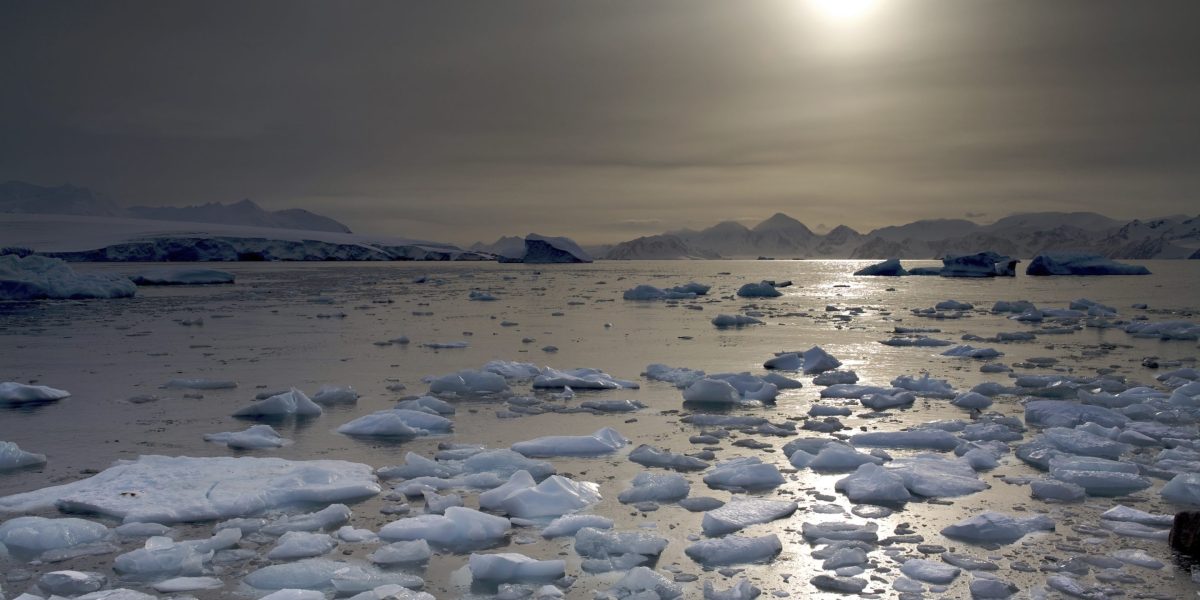Though the full melt will take hundreds of years, slowly adding nearly 6 feet (1.8 meters) to sea levels, it will be enough to reshape where and how people live in the future, the study’s lead author said.
Researchers used computer simulations to calculate future melting of protective ice shelves jutting over Antarctica’s Amundsen Sea in western Antarctica. The study in Monday’s journal Nature Climate Change found even if future warming was limited to just a few tenths of a degree more – an international goal that many scientists say is unlikely to be met – it would have “limited power to prevent ocean warming that could lead to the collapse of the West Antarctic Ice Sheet.”
“Our main question here was: How much control do we still have over ice shelf melting? How much melting can still be prevented by reducing emissions?” said study lead author Kaitlin Naughten, an oceanographer at the British Antarctic Survey. “Unfortunately, it’s not great news. Our simulations suggest that we are now committed to the rapid increase in the rate of ocean warming and ice shelf melting over the rest of the century.”
While past studies have talked about how dire the situation is, Naughten was the first to use computer simulations to study the key melting component of warm water melting ice from below, and the work looked at four different scenarios for how much carbon dioxide the world pumps into the atmosphere. In each case, ocean warming was just too much for this section of the ice sheet to survive, the study found.
Naughten looked at melting gatekeeper ice shelves, which float over the ocean in this area of Antarctica that is already below sea level. Once these ice shelves melt, there’s nothing to stop the glaciers behind them from flowing into the sea.
Naughten specifically looked at what would happen if somehow future warming was limited to 1.5 degrees Celsius (2.7 degrees Fahrenheit) over mid-19th century levels — the international goal — and found the runaway melting process anyway. The world has already warmed about 1.2 degrees Celsius (nearly 2.2 degrees Fahrenheit) since pre-industrial times and much of this summer temporarily shot past the 1.5 mark.
Naughten’s study concentrated on the part of the West Antarctic Ice Sheet that is most at risk from melting from below, near the Amundsen Sea. It includes the massive Thwaites ice shelf that is melting so fast it got the nickname “the Doomsday Glacier.” West Antarctica is only one-tenth of the southern continent but is more unstable than the larger eastern side.
That part of Antarctica “is doomed,” said University of California Irvine ice scientist Eric Rignot, who wasn’t part of the study. “The damage has already been done.”
University of Colorado ice scientist Ted Scambos, who also wasn’t part of the study, said this ice sheet “eventually is going to collapse. It’s not a happy conclusion and it is one that I’m only saying reluctantly.”
Naughten doesn’t like to use the word “doomed,” because she said 100 years from now the world might not just stop but reverse carbon levels in the air and global warming. But she said what’s happening now on the ground is a slow collapse that can’t be stopped, at least not in this century.
“I think it’s unavoidable that some of this area is lost. It’s unavoidable that the problem gets worse,” Naughten told The Associated Press. “It isn’t unavoidable that we lose all of it because sea level rise happens over the very long term. I only looked in this study up to 2100. So after 2100, we probably have some control still.”
No matter what words are used, Naughten said she and other scientists studying the area in previous research conclude that this part of Antarctica “couldn’t be saved or a lot of it couldn’t be saved.”
Naughten’s study did not calculate how much ice would be lost, how much sea level would rise and at what speed. But she estimated that the amount of ice in the area most at risk if it all melted would raise sea levels by about 1.8 meters (5.9 feet).
However, she said, that is a slow process that would play out through the next few hundred years through the 2300s, 2400s and 2500s.
Naughten said that may seem like a long way away, but noted that if the Victorians of the 1800s had done something to drastically change the shape of our world, we would not look well on them.
This type of sea level rise would be “absolutely devastating” if it happened over 200 years, but if it could be stretched out over 2,000 years, humanity could adapt, Naughten said.
“Coastal communities will either have to build around or be abandoned,” Naughten said.
While this part of Antarctica’s ice sheet is destined to be lost, other vulnerable sections of Earth’s environment can still be saved by reducing heat-trapping emissions so there is reason to still cut back on carbon pollution, Naughten said.
Twila Moon, deputy chief scientist at the National Snow and Ice Data Center who wasn’t part of the research, said she worries that most people will see nothing but doom and gloom in the research.
“I don’t see a lot of hope,” Naughten said. “But it’s what the science tells me. So that’s what I have to communicate to the world.”
Naughten quoted former NASA scientist Kate Marvel, saying “when it comes to climate change we need courage and not hope. Courage is the resolve to do well without the assurance of a happy ending.”
___
Read more of AP’s climate coverage at http://www.apnews.com/climate-and-environment.
___
Associated Press climate and environmental coverage receives support from several private foundations. See more about AP’s climate initiative here. The AP is solely responsible for all content.

























